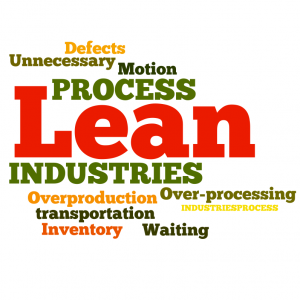Have you been hearing the term Lean used in your organization lately? Are you curious about how principles such as 7Ws and 5Ss can help you deliver better results?
Most manufacturing and some service processes suffer from 7 types of waste. In the Lean Manufacturing realm, these types of wastes are referred to as the 7Ws. They are:
-

Overproduction
- Unnecessary transportation
- Inventory
- Motion
- Defects
- Over-processing
- Waiting
By using a formal methodology to map processes and identify the impact of each of the 7 Ws on your process, implementing Lean Principles let you do more with less and increase the performance of your process.
Womack, Jones and Roos (1990) coined the phrase 'Lean Manufacturing' to describe the Toyota Production System (TPS) in the book 'The Machine That Changed The World' which presented the results of a five-year study into the automotive industry. Over the decade, the Lean principles have been used along with Six Sigma to improve productivity and process capability in high performing organizations. In a 2007 McKinsey article, the authors claimed that operating executives in many sectors are adopting lean techniques rapidly, so soon they will no longer be a differentiating factor; the important thing, in the heat of competition, will be how well companies implement them.
In my upcoming webinar on March 2, I will present examples of how Lean techniques can be used in the process industries. I will also share examples of how the 5 Ss of Lean can be used to address and reduce the 7Ws.
Below is a glimpse into the presentation. You can view the LIVE Webinar on ChemE On Demand Wednesday, March 2 at 2:00 p.m.



Comments
Adnan: Unfortunately I missed the webinar, however I have a question; when considering "just in time" manufacturing, or "lean" operation. One of the 7 W's is inventory, with the emphasis on reducing both raw material and finished product inventories to promote a "pull" system rather than a "push" system for the manufacturing line. Have companies changed their strategies on “JIT” or “Lean” inventory levels in light of the potential for major supply chain upsets, such as hurricane Katrina, BP Drilling Rig, unrest in the Middle East, etc. How has this reshaped the “lean manufacturing ” philosophy regarding inventories if at all? Thanks for the article. Rich